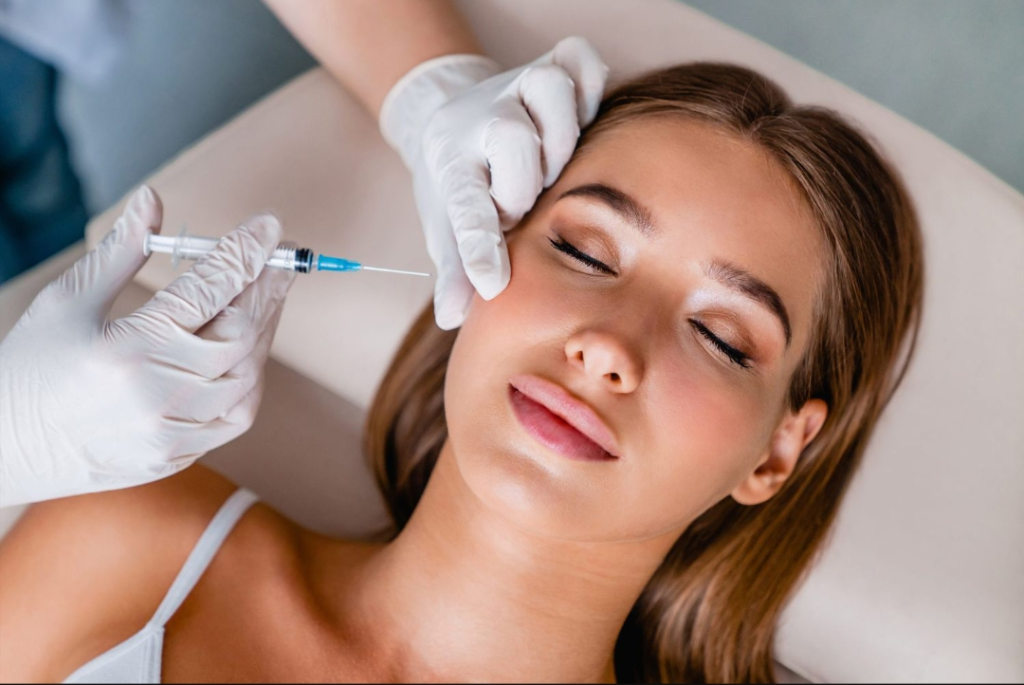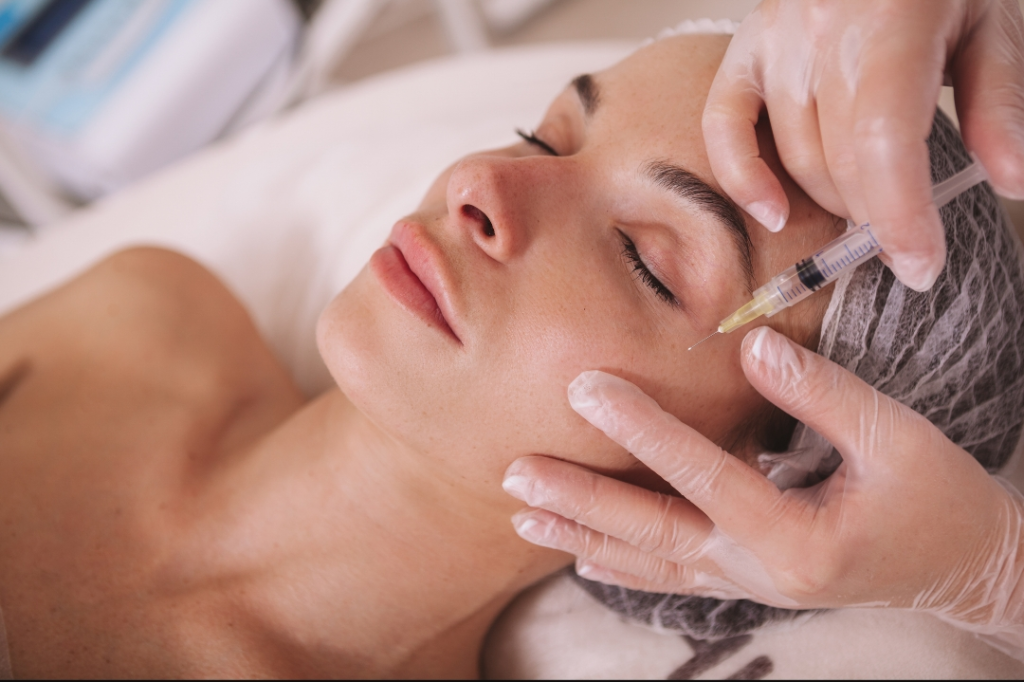According to a study published in the Journal of Clinical and Aesthetic Dermatology, tear fillers significantly reduce under-eye puffiness in 80-90% of people. It is important to remember that this treatment has a rare side effect called vascular occlusion. In this article, we try to balance the pros and cons of this popular but risky operation.
• What exactly does an under eye filler do?
Injecting dermal fillers into the under-eye area to treat problems including under-eye bags, dark circles, or sunken looks is known as under-eye fillers.
Also known as under eye or under eye hollow fillers. A number of reasons, such as age, generation or loss of volume, can lead to the development of hollows in the under-eye area. or depressions, especially in the area under the lower eyelid. This can make one look shabby or old. Under-eye fillers work to rejuvenate and restore volume to the area, giving the area a smoother, younger look.
Hyaluronic acid (HA), a naturally occurring element in the skin, helps to retain moisture and give volume to the skin. Dermal fillers used in under eye filler procedures. The depressions in the hollows under the eyes are filled with filler, giving the area a more puffy appearance.
A trained medical specialist, such as a dermatologist or cosmetic surgeon, often performs the surgery. To reduce pain before the procedure, numbing fluid or local anesthesia can be used. The filler is then injected into the under eye area using a small needle or cannula. With improved volume and a reduced appearance of under-eye bags, bags or dark circles, under-eye fillers can provide immediate, significant benefits. Results usually last between 6 and 12 months.
However, this may vary depending on the filler used and the individual’s metabolism. It is important to remember that, like any cosmetic surgery, under eye fillers have risks and side effects.
These may include temporary bruising, redness, swelling, infections or allergic reactions. Therefore, before getting an under-eye filler, it is essential to speak with a qualified specialist, discuss your concerns and expectations, and learn about the potential hazards.

• What qualities distinguish a strong candidate?
People with these types of problems are often good candidates. Filler under the eye. People with hollow or sunken under-eye areas as a result of volume loss or heredity People with soft and hard under-eye bags brought on by fat pads or sagging skin People with dark pigmentation or discoloration under the eyes are said to have dark circles.
In addition to these concerns, qualified applicants often fit the following description.
General well-being:
Candidates should be in excellent physical condition and free of underlying diseases that may increase the risk of treatment.
Realistic expectations:
It is important to recognize that under eye fillers can improve the appearance of the area but not completely eliminate all problems and to have realistic expectations regarding the results of the procedure.
Non-smokers:
It is generally advised that applicants are non-smokers or prepared to stop smoking temporarily before and after treatment, as smoking can affect the healing process and increase the risk of problems.
Candidates must be free of any disorders or contraindications that prevent them from using dermal fillers, such as allergies to filler ingredients or active skin infections in the treatment area. To find out if you’re a good candidate for under-eye fillers, it’s important to speak with a trained medical specialist, such as a dermatologist or cosmetic surgeon. They can evaluate your unique concerns, look at your under-eye area and assess your candidacy. When giving you personalized advice and suggestions, they take into account factors such as your medical background, skin condition and special needs.
• What to expect throughout treatment.
Consultation:
The usual starting point for your visit is a consultation with a licensed medical specialist. Your under-eye area will be evaluated, your concerns and goals will be discussed, and you will be determined if you are a good candidate for under-eye fillers. They will address any questions you may have, go over the risks and benefits of the procedure and explain it to you.
Preparation:
The under eye area is cleaned and prepared on the day of treatment. To reduce any pain during surgery, local anesthesia or topical anesthesia may be used.
After the area is numbed, the dermal filler is injected into the under eye area using a small needle or cannula. Depending on the individual’s requirements and the specific filler used, the method of injection may vary. To fill in hollow areas, add volume and reduce the appearance of under-eye bags or dark circles, the medical specialist will subtly inject fillers.
Monitoring and Adjustment:
The medical expert will keep an eye on the findings to make sure they are symmetrical and achieving the desired effect. To get the best results, they can be changed as needed.
Post-treatment care: To ensure even distribution of the filler after injection, the doctor may massage the area or apply slight pressure. In addition, they may provide guidelines for post-treatment care, including warnings or restrictions to be followed.
Immediate benefits and recovery:
You should immediately see an improvement in volume and a reduction in the hollows or bags under your eyes. It is very important to remember that there may be initial bruising or swelling, which should subside within a few days to a week. After treatment, you can usually return to your normal routine right away. However, it is best to wait a few days before engaging in strenuous activity, excessive sun exposure, or using specific skin care products.
Follow-up appointments:
The doctor may schedule one to review the findings, correct any problems, and make sure you’re satisfied with the results. If necessary, they can also talk about follow-up or touch-up procedures. It is important to speak with a licensed medical professional who can assist you with the treatment process, provide you with personalized guidance, and ensure your comfort and safety during the procedure. Depending on your specific circumstances, they can tell you what to expect before, during, and after treatment. You will be given detailed instructions.

• What are the possible risks?
Although under-eye filler procedures are often considered safe, they can have risks and adverse effects. Before surgery, it is important to be aware of these risks and discuss them with your doctor.
Possible risks include
Bruising and swelling:
Temporary bruising and swelling of the treated area is common. Usually, this gets better within a few days to a week. These adverse effects can be prevented by using cold compresses and blood thinners before treatment.
There is a small chance of infection at the injection site, although it is uncommon. To minimize this danger, it is very important to make sure that the surgery is performed in a sterile environment by a licensed medical specialist.
Allergic reactions:
Although they are rare, allergic reactions to dermal fillers can occur. Hyaluronic acid (HA), which is often well tolerated, is the main ingredient in fillers. However, if you have known sensitivities to any of the filling components, it is very important to inform your doctor in advance.
Asymmetry or lumps may occur when the filler settles unevenly under certain conditions. Often times, massage or additional padding can be used to correct this.
Vascular problems, such as a blocked blood vessel or injection into a blood vessel, are a small but possible hazard. These problems can lead to tissue necrosis, which is tissue death, or skin injury. This danger is reduced by expert injection technique and an understanding of facial architecture.
Nodules or nodules:
These abnormal inflammatory responses to the filling may manifest as nodules or nodules. They may resemble small lumps or bumps under the skin and require further care or removal. It is very important to choose a licensed medical specialist with under eye filler treatment knowledge. They can walk you through these potential dangers, consider your specific situation, and take preventative measures before treatment to minimize these risks. It is very important to contact your doctor immediately for further assessment and advice if you have bothersome or persistent side effects after therapy.
• What is the Tyndall effect?
The Tyndall effect, often called Tyndall scattering, is a phenomenon that occurs when light is scattered by particles or molecules in a medium, leaving behind a significant blue or gray cast.
The Tyndall effect can occur during the use of dermal fillers if the filler is applied too superficially or in a light-scattering manner without allowing the filler to dissolve or be absorbed by the surrounding tissue. Hyaluronic acid (HA)-containing dermal fillers injected too close to the skin’s surface cause light to scatter and interact with the HA particles, giving a noticeable blue or gray tint in certain lighting conditions.
Certain filler types, particularly those with larger particle sizes, are more likely to cause this effect. The Tyndall effect is often considered undesirable in aesthetic operations because it can create an unnatural or “blued” appearance in the treated area. It is critical that the medical practitioner has a thorough understanding of anatomy and appropriate injection procedures to minimize the risk of the Tyndall effect. Ensuring good integration with surrounding tissue and preventing superficial localization.















Hey very interesting blog!